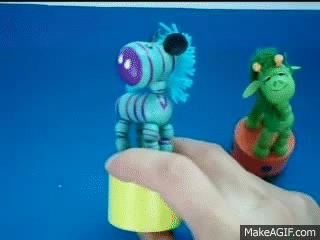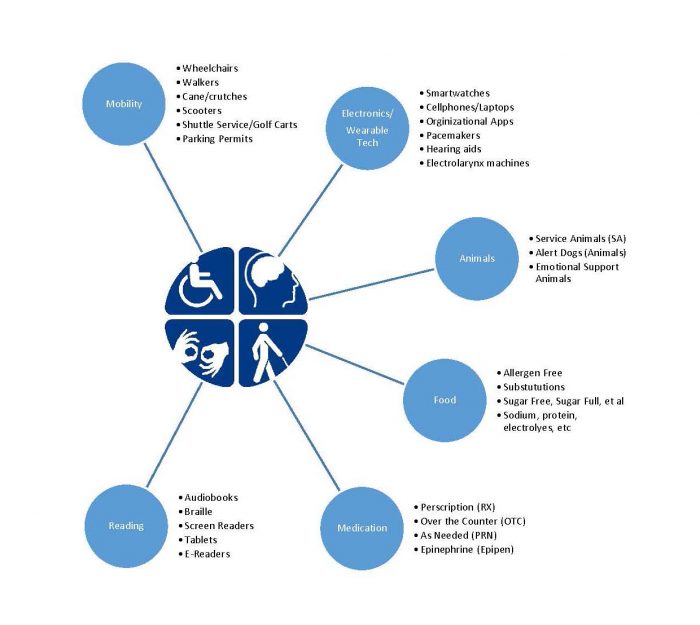#InclusionWorks: National Disability Employment Awareness Month
October is National Disability Employment Awareness Month. We’re highlighting diversity at the Smithsonian with a special series on accessibility, accommodation, resources and programs. In part one, we define our terms and give a preview of what’s ahead. #InclusionWorks
I’m Max Kibblewhite and I’ve been an intern at the Torch for the past few months. I’m 23 years old, an Aquarian, cat owner, concert goer, art-maker. My genetics have graced me with Hypermobility-Type Ehlers-Danlos Syndrome, a connective tissue disorder that affects the elasticity of my collagen. Instability in my musculoskeletal, autonomic nervous, cardiovascular and gastrointestinal systems make me look something like this:
In between juggling my assignments covering dozens of Smithsonian units and my appointments with 15 different medical specialists, it occurred to me that the Torch should acknowledge the wonderful diversity of abilities we see within our Institution. October is National Disability Employment Awareness Month and this month, we will be hearing from voices such as Katherine Ott, curator of the Division of Medicine and Science at the National Museum of American History, who will shed some light on how disability has been represented throughout history. We’ll also talk to Carol Gover from the Office of Equal Employment and Minority Affairs, and Beth Ziebarth and Ashley Grady from the Accessibility Office on the Smithsonian’s inward- and outward-facing accessibly policies. To cap it all off, we’ll have some fun at our monthly Morning at the Museum program, coming up in November at the Udvar-Hazy Center.
But let’s begin at the beginning—with a crash course in the definitions of disability, accessibility, ableism and diversity.
The Americans with Disabilities Act, often shortened to the ADA, was signed into law in 1990 by George H. W. Bush. Modeled after the Civil Rights Act of 1964, it prohibits discrimination based on disability and insures that people with disabilities are granted the same opportunities as others in housing, employment and day-to-day life. If someone has a record of a disability or identifies as having a disability, they are covered by the Americans with Disabilities Act.
Disabilities come in all shapes and types. Some are visible, some are not. There is no one disability narrative, and disabilities are as varied and nuanced as the individuals who have them. Here is some helpful vocabulary to get started.
Ableism is a form of discrimination based on someone’s ability or disability. While not as immediately recognizable as its siblings racism and sexism, ableism is unfortunately deeply engrained within our society. Most of us are guilty of ableism every day without even realizing it, simply because we are not aware of its effect. Ableism can be as glaring as an entrance to a business that is only accessible via stairs, or as minor as word choice.
Able-bodied: someone who is conventionally abled. Not disabled.
Aids are anything that help a person with disabilities in everyday life. For example, the Torch is currently auditing its compliance with best practices for website accessibility by making sure that every image published since May 2009 has an ALT TEXT caption. An ALT TEXT caption describes what is depicted in a photo or graphic and appears in web searches or when a photo will not load. These captions are also an accessibility aid because they are used by screen readers to describe images to blind or low-vision individuals. Here are some examples of aids. (Click to expand diagram.)
Cognitive impairment: difficulty remembering, learning new things, concentrating, or making decisions. This can include learning disabilities, Alzheimer’s, autism and sensory processing disorders.
Microagressions: First used to describe subtle racial injustices, microagressions can be ascribed to ableism as well. Microagressions are “brief and commonplace daily verbal, behavioral, or environmental indignities, whether intentional or unintentional, that communicate hostile, derogatory, or negative slights and insults toward” minorities. Examples of ableist microagressions include:
- Commandeering the disabled stall (larger bathroom stalls that include a support bar) even if you really have to pee.
- Using parking spaces reserved for the disabled, even if it’s just for a quick errand. Or even if you really, really have to pee.
- Using pejoratives like “dumb,” “lame,” “stupid,” “crippled,” “gimpy” and “retarded,” even when referring to inanimate objects.
- Questioning the validity or necessity of aids such as parking permits, mobility aids or service animals. Petting or otherwise distracting service animals while they are working, as this can prevent the animal from doing its job. While Rufus might look adorable, he is serving as medical assistance and must be treated as such. You wouldn’t play with the dial on someone’s oxygen tank, would you?
- Griping at folks who take the elevator one floor or insisting they take the stairs “for their health.” Stairs are not a universally acceptable substitute for people with (not always visible) mobility issues.
- Asking invasive questions about mobility aids, service animals, absences or anything related to a person’s health. Unless the person has volunteered the information, it’s none of your business.
- Making helpful remarks such as “You don’t look sick,” “You’re too young to be in this kind of pain,” or insisting disabled people only look or present one way. Being a “concern troll.” Practicing medicine without a license. Do not insist that cancer, endocrine disorders, asthma, a broken leg, etc. can be cured by eliminating dairy, avoiding gluten or taking megadoses of Vitamin C. Trust me, I’ve tried eliminating dairy. The only thing I learned is everyone is missing out on coconut ice cream.
Mobility impairment: Inability to move extremities. This can include walking, grasping, gross and fine motor skills, or lifting objects.
Invisible illnesses or invisible disabilities: These are not immediately apparent to an outside observer but nonetheless affect a person’s mobility, stamina or other aspects of daily life. The person may not fit the stereotype of disability, may not or only occasionally use devices or aids, or may have their disability questioned. Examples of invisible disabilities include allergies, chronic pain, cancer, fibromyalgia, diabetes, mental illness, Lupus and Lymes disease and my buddy, Ehlers-Danlos.
Person-first language: Putting the person before their disability; for example, designating someone a “patient with cancer” rather than a “cancer patient.” Many people prefer person-first language because it separates the person from the disability and gives precedence to the person. However, others see disability as inexorably linked with their identity (or may not even consider their condition a disability at all) and prefer qualifier-first language, as do many members of the Deaf community. As always, the simple rules of common courtesy apply. Ask a person for their preference and then use it.
Next week: Katherine Ott, curator in the Division of Medicine and Science at the American History Museum, offers insight into how the changing notions of disability have informed the Smithsonian’s collections.
National Disability Employment Awareness Month is a national campaign that raises awareness about disability employment issues and celebrates the many and varied contributions of America’s workers with disabilities. The theme for 2016 is #InclusionWorks.
NDEAM’s roots go back to 1945, when Congress enacted a law declaring the first week in October each year “National Employ the Physically Handicapped Week.” In 1962, the word “physically” was removed to acknowledge the employment needs and contributions of individuals with all types of disabilities. In 1988, Congress expanded the week to a month and changed the name to “National Disability Employment Awareness Month.”
Posted: 4 October 2016
-
Categories:
Administrative News , Education, Access & Outreach , Feature Stories , News & Announcements





